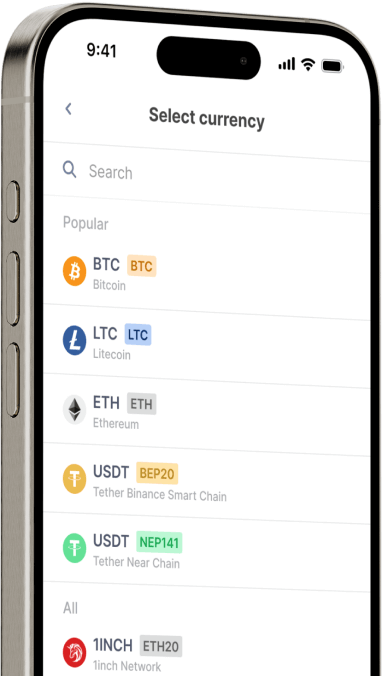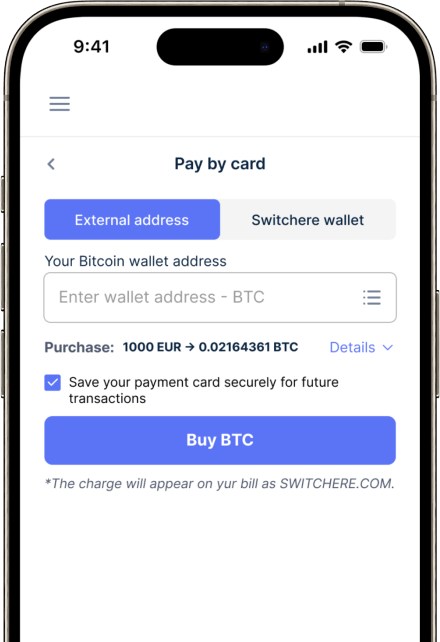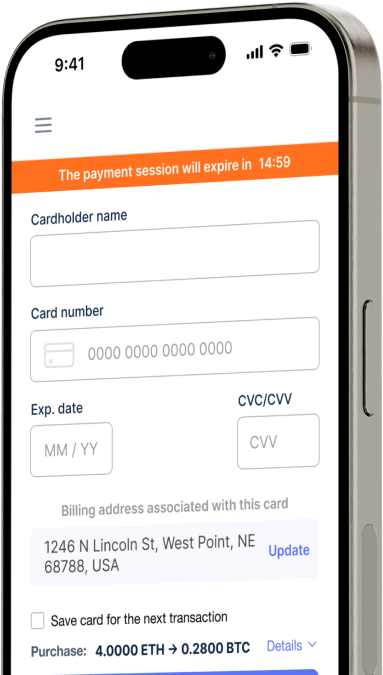Konverter
Singapore Dollar (SGD) til Celsius (CEL) med det samme
Køb Celsius (CEL) med Singapore Dollar (SGD) nemt hos Switchere og nyd godt af hurtige, sikre transaktioner.
Omkring
Celsius (CEL)
Celsius Network, med sin native CEL-token, opstod som en stor centraliseret finansplatform (CeFi), der var designet til at bygge bro mellem traditionel bankvirksomhed og verdenen af digitale aktiver. Dens primære funktion var at tilbyde brugere muligheden for at tjene afkast på deres kryptovalutabeholdninger og at optage lån med krypto som sikkerhed. Platformen fungerede på depotbasis og forvaltede brugernes midler for at generere renteindtægter gennem udlånsaktiviteter til institutionelle låntagere. Denne model positionerede den som et brugervenligt alternativ for krypto-indehavere, der ønskede at sætte deres aktiver i arbejde uden at navigere i komplekse DeFi-protokoller.
CEL-tokenet var kernen i dets loyalitets- og belønningssystem. Som et utility-token gav det at holde og bruge CEL håndgribelige fordele inden for Celsius-økosystemet, såsom fordelagtige rentesatser for både at tjene og låne. Brugere kunne modtage højere afkast på deres deponerede aktiver og lavere renter på lån, hvor belønninger ofte blev distribueret ugentligt i form af CEL. Denne tokenomics-struktur var designet til at tilskynde til brugerloyalitet og drive efterspørgslen efter det native aktiv. Platformen stod dog over for betydelige operationelle udfordringer og markedspres, hvilket i sidste ende førte til en Chapter 11-konkursbegæring, der påvirkede dens brugere dybt og omformede fortællingen om risiko i CeFi-udlånsindustrien.
Køb andre 150+ kryptovalutaer for Singapore Dollar (SGD)
Andre mønter til Singapore Dollar (SGD)
-
SGD til ZRX
-
SGD til 1INCH
-
SGD til AAVE
-
SGD til ACH
-
SGD til ALGO
-
SGD til TLM
-
SGD til ANKR
-
SGD til APE
-
SGD til NFT
-
SGD til API3
-
SGD til APT
-
SGD til ARPA
-
SGD til AUDIO
-
SGD til AVAX
-
SGD til AVAX
-
SGD til AXS
-
SGD til BADGER
-
SGD til BAL
-
SGD til BNT
-
SGD til BAT
-
SGD til BNB
-
SGD til BSW
-
SGD til BSV
-
SGD til BLUR
-
SGD til BONE
-
SGD til CTSI
-
SGD til CELR
-
SGD til CELO
-
SGD til CEL
-
SGD til LINK
-
SGD til CHZ
-
SGD til CHR
-
SGD til C98
-
SGD til COMP
-
SGD til CFX
-
SGD til PEOPLE
-
SGD til CVX
-
SGD til ATOM
-
SGD til CTC
-
SGD til CRV
-
SGD til DAI
-
SGD til DASH
-
SGD til MANA
-
SGD til DENT
-
SGD til DGB
-
SGD til DYDX
-
SGD til XEC
-
SGD til EOS
-
SGD til ETC
-
SGD til ENS
-
SGD til ETHW
-
SGD til FET
-
SGD til FIL
-
SGD til FLOKI
-
SGD til GALA
-
SGD til GNO
-
SGD til ONE
-
SGD til HBAR
-
SGD til HOT
-
SGD til HOOK
-
SGD til ICX
-
SGD til ILV
-
SGD til IMX
-
SGD til INJ
-
SGD til ICP
-
SGD til IOST
-
SGD til IOTX
-
SGD til JASMY
-
SGD til JST
-
SGD til KAVA
-
SGD til KCS
-
SGD til KSM
-
SGD til KNC
-
SGD til LDO
-
SGD til LQTY
-
SGD til LPT
-
SGD til LOOKS
-
SGD til LRC
-
SGD til LUNA
-
SGD til MKR
-
SGD til MASK
-
SGD til EGLD
-
SGD til ALICE
-
SGD til NEAR
-
SGD til XEM
-
SGD til NEXO
-
SGD til NOT
-
SGD til NMR
-
SGD til OKB
-
SGD til OMG
-
SGD til ONT
-
SGD til EDU
-
SGD til OP
-
SGD til OGN
-
SGD til CAKE
-
SGD til PAXG
-
SGD til PENDLE
-
SGD til DOT
-
SGD til POL
-
SGD til QTUM
-
SGD til QNT
-
SGD til RDNT
-
SGD til XRD
-
SGD til RVN
-
SGD til REN
-
SGD til RSR
-
SGD til RLC
-
SGD til RPL
-
SGD til SFP
-
SGD til SHIB
-
SGD til SKL
-
SGD til SXP
-
SGD til STND
-
SGD til STG
-
SGD til XLM
-
SGD til GMT
-
SGD til STORJ
-
SGD til STMX
-
SGD til SUSHI
-
SGD til SNX
-
SGD til USDT (Polygon)
-
SGD til USDT (AVAC)
-
SGD til USDT (BEP20)
-
SGD til USDT (ERC20)
-
SGD til USDT (SPL)
-
SGD til USDT (NEP141)
-
SGD til USDT (FA2)
-
SGD til USDT (TRC20)
-
SGD til USDT (JETTON)
-
SGD til XTZ
-
SGD til GRT
-
SGD til SAND
-
SGD til TFUEL
-
SGD til THETA
-
SGD til RUNE
-
SGD til TON
-
SGD til TUSD (BEP20)
-
SGD til TUSD (TRC20)
-
SGD til TWT
-
SGD til UOS
-
SGD til UMA
-
SGD til UNI
-
SGD til USDC (Polygon)
-
SGD til USDC (SPL)
-
SGD til USDC (OP)
-
SGD til USDC (BEP20)
-
SGD til USDC (AVAC)
-
SGD til USDC (ARB)
-
SGD til USDC (ERC20)
-
SGD til VET
-
SGD til VRA
-
SGD til WAXP
-
SGD til WOO
-
SGD til WLD
-
SGD til WBTC
-
SGD til WMINIMA
-
SGD til XDC
-
SGD til YFI
-
SGD til YGG
-
SGD til ZIL
Sådan køber du Celsius (CEL).
Ofte stillede spørgsmål
-
Hvad var den primære metode til at erhverve Celsius (CEL) med Singapore dollars (SGD)?
Historisk set var den primære metode indirekte. Brugere i Singapore ville bruge en fiat on-ramp på en reguleret kryptovalutabørs til at købe et basisaktiv som BTC eller ETH med SGD via FAST-overførsel eller PayNow. De ville derefter overføre det aktiv til deres Celsius Network-tegnebog og bruge den indbyggede byttefunktion til at konvertere det til CEL-tokens, primært for at få adgang til højere afkast og loyalitetsniveauer inden for CeFi-platformen.
-
Hvilken nytteværdi leverede CEL-tokenet inden for Celsius-økosystemet?
CEL-tokenet var et utility-token designet til at belønne brugere. Ved at holde CEL og opnå forskellige loyalitetsniveauer kunne brugere få adgang til fordele som bonusbelønninger på deres afkastgivende indskud, rabatter på rentebetalinger for krypto-støttede lån og højere rater for at tjene in-kind. Dets værdi var uløseligt forbundet med væksten og sundheden i Celsius Networks CeFi-tjenester.
-
Krævede brugere i Singapore KYC/AML-overholdelse for at handle med CEL?
Ja. Enhver interaktion med en fiat on-ramp for at konvertere SGD til krypto på en centraliseret platform, hvilket var et nødvendigt første skridt, krævede fuld overholdelse af Kend Din Kunde (KYC) og Anti-Hvidvask (AML) regler. Dette indebar identitetsbekræftelse påbudt af Monetary Authority of Singapore (MAS) for at sikre sikre og lovlige blockchain-transaktioner.
-
Er det stadig muligt at handle SGD/CEL-parret efter Celsius Network's konkurs?
Direkte SGD/CEL-handelspar er stort set ikke-eksisterende. Efter Celsius Networks konkursbegæring blev CEL fjernet fra de fleste store kryptovalutabørser. Eventuel resterende likviditet findes typisk på decentrale børser (DEX'er) i par som CEL/WETH. At erhverve CEL nu indebærer en flertrinsproces og betragtes som yderst spekulativt på grund af den usikre fremtid for det digitale aktiv og dets underliggende platform.
-
Hvad er de primære risici ved at købe CEL med SGD på det nuværende marked?
Den største risiko er, at CEL er tokenet for en konkursramt enhed. Dets fremtidige nytteværdi er fuldstændig spekulativ og afhænger af resultatet af restruktureringsplaner. Andre store risici inkluderer ekstremt lav likviditet, som kan forårsage massiv prisvolatilitet (slippage), potentialet for yderligere afnoteringer fra de få tilbageværende handelsplatforme, og den høje sandsynlighed for, at det digitale aktiv aldrig vil genvinde nogen betydelig, nytteværdidrevet værdi.
-
Hvordan bestemmes værdien af CEL-tokenet nu, hvor dets platform ikke er operationel?
I øjeblikket er værdien af CEL-tokenet næsten udelukkende drevet af markedsspekulation snarere end fundamental nytteværdi. Prisudsving påvirkes af nyheder relateret til Celsius Networks konkursbehandling, potentielle genopretningsplaner for kreditorer og spekulativ handel fra et lille fællesskab. Det afspejler ikke nogen aktiv anvendelse til afkastgenerering eller lånerabatter, som det gjorde tidligere.




